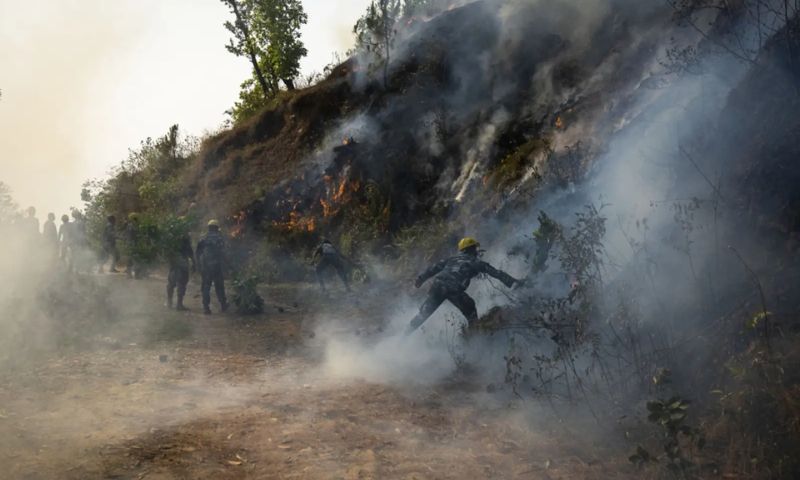KATHMANDU: A massive wildfire raged on the outskirts of Nepal’s capital on Thursday, with firefighters and locals joining forces to combat the blaze. The country, nestled in the Himalayas, is grappling with an intense fire season exacerbated by a heatwave, authorities said.
Nepal sees a spate of wildfires annually, typically starting around March. However, in recent years, their frequency and severity have escalated, linked with climate change, which brings about drier winters.
Throughout the night, emergency crews tirelessly battled the flames that consumed a wooded area in Lalitpur, situated on the southern edge of the Kathmandu valley.
This year, over 4,500 wildfires have been documented across the nation, nearly doubling from the previous year, although still less than the catastrophic fire season experienced in 2021.
Sundar Prasad Sharma from the National Disaster Risk Reduction and Management Authority expressed concern over the unprecedented rise in wildfires, predicting the season to persist for another month. He highlighted the challenging terrain hindering firefighting efforts.
According to Badri Raj Dhungana, spokesperson for the environment ministry, the surge in wildfires can be attributed to prolonged drought and heatwave conditions in Nepal’s southern plains. Typically, wildfires peak in late April, but this year, they continue to escalate due to soaring temperatures.
Scientific research underscores the role of climate change in prolonging and intensifying heatwaves, a phenomenon experienced not only in Nepal but across South and Southeast Asia. The El Nino phenomenon further exacerbates the already unusually warm weather this year.
Temperatures exceeding 40 degrees Celsius have been recorded in Lumbini, a revered Buddhist pilgrimage site, and other parts of the southern region, with forecasts predicting more hot weather ahead.
Concerns over the health impacts of the heatwave prompted the closure of more than a hundred schools in the southern city of Butwal for two days.























